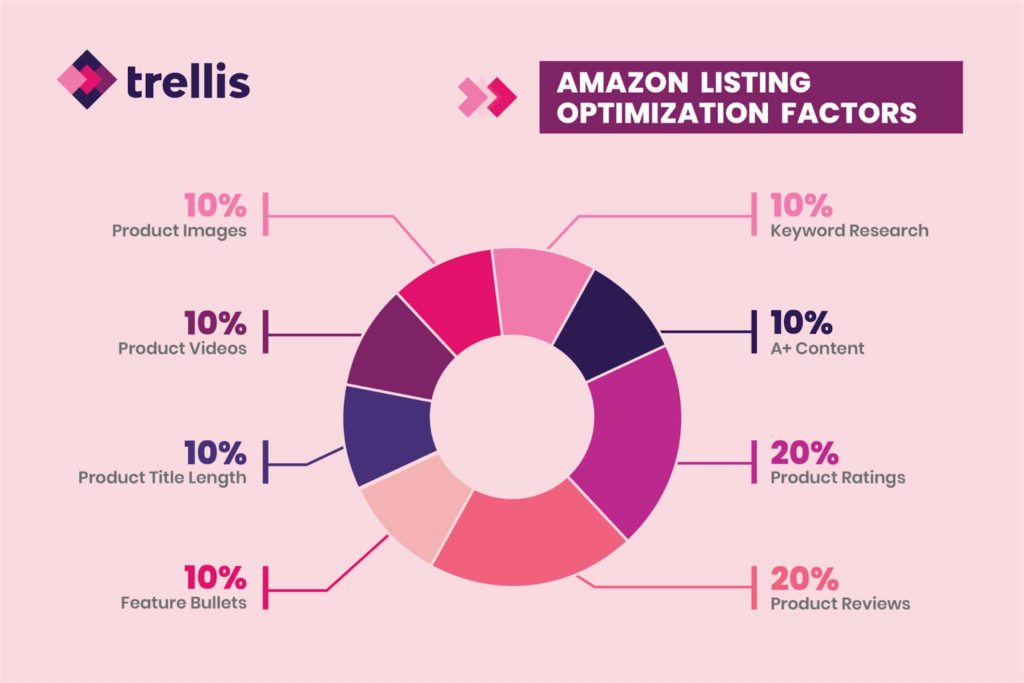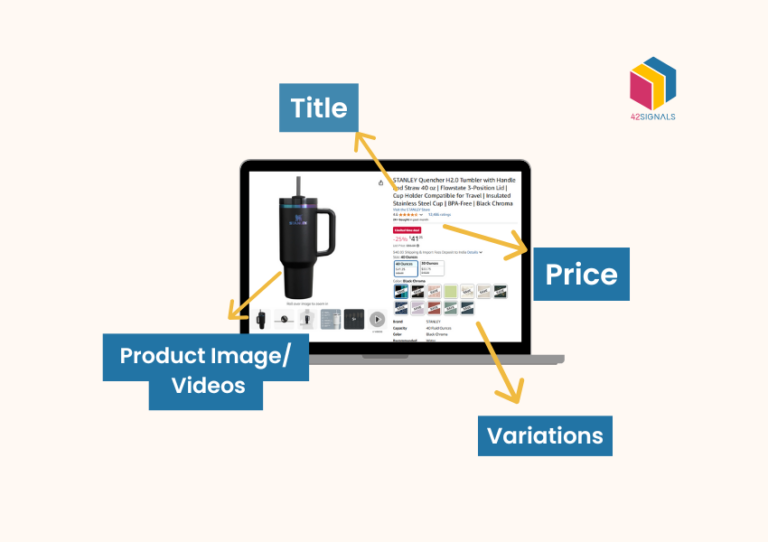In 2023, global retail e-commerce sales reached an estimated 5.8 trillion U.S. dollars. Projections dictate a 39 per cent growth expected to surpass eight trillion dollars by 2027. That’s how important an ecommerce strategy can be in today’s competitive marketplace.
There are 6 essential elements to crafting a knockout ecommerce strategy that this article will address. Let’s look at it –
Optimized Product Listings
The foundation of any successful ecommerce strategy is optimising product listings. This includes ensuring that product titles accurately reflect what customers are searching for, using relevant keywords in product descriptions, and including high-quality images that showcase products from multiple angles.

Image Source: Trellis
Additionally, it’s important to provide detailed information about each product, such as materials, dimensions, and weight, to help customers make informed purchasing decisions.
Streamlined Checkout Process

Image Source: Nimbbl
A streamlined checkout process is critical for reducing cart abandonment rates and increasing conversions. To optimize your checkout process, consider offering features like one-click ordering, guest checkouts, and mobile optimization. Additionally, ensure that your payment gateway is secure and reliable, and offers various payment options to cater to different customer preferences.
Personalized Marketing Campaigns

Image Source: WebFX
Personalization is key to creating engaging marketing campaigns that resonate with your target audience. Use data and analytics to segment your customer base and tailor your messaging accordingly. For example, send targeted email campaigns based on purchase history or browsing behavior, and use social media advertising to reach specific demographics. Personalization helps build trust and increases the likelihood of repeat business.
User-Friendly Website Design
Your website is often the first point of contact between your brand and potential customers. A user-friendly design can significantly impact their shopping experience and influence their decision to buy from you. Ensure that your site is easy to navigate, has clear calls to action, and loads quickly across all devices. Consider investing in UX testing to identify areas of improvement and optimize the overall user experience.
Effective Inventory Management

Image Source: NetSuite
Effective inventory management is vital for maintaining customer satisfaction and avoiding lost sales due to stockouts or overstocking. Implement a robust inventory management system that provides real-time updates on stock levels, tracks orders, and automates restocking processes. This will help prevent overselling, reduce waste, and improve supply chain efficiency.
Exceptional Customer Service
Lastly, customer service is crucial for building brand loyalty and encouraging positive word-of-mouth marketing. Provide multiple channels for customers to interact with your support team, such as phone, email, and live chat. Respond promptly to inquiries, address concerns courteously, and resolve issues efficiently. Consider implementing a rewards program or loyalty scheme to incentivize repeat business further.
The above elements craft a compelling ecommerce strategy that can boost sales and grow the customer base.
Ecommerce insights help businesses stay current and updated on different metrics that can boost business performance. That, equipped with the relevant ecommerce market intelligence tools to understand digital shelf analytics and voice of customer analytics, is enough data for companies to see growth.
If you are interested in knowing more about ecommerce analytics and how it can help your business, sign up for a free trial today.
Frequently Asked Questions
What are the 4 C’s of e-commerce?
Content: The information and media that is presented on an e-commerce website, including product descriptions, images, videos, and other types of content that help customers learn about and engage with products.
Commerce: The transactional aspect of e-commerce, including the ability for customers to purchase products online, payment processing, order management, and fulfilment.
Community: The social aspects of e-commerce, including user-generated content, customer reviews, ratings, and discussions facilitate interaction between customers and foster a sense of community around a brand or product.
Convenience: The ease and speed with which customers can find, purchase, and receive their desired products, including features like easy navigation, search functionality, mobile optimization, and fast shipping options.
What are the three pillars of ecommerce strategy?
The three pillars of e-commerce strategy are:
Customer experience: Creating a seamless, intuitive, and personalized shopping experience that meets the needs and exceeds the expectations of customers. This includes offering a wide range of products, providing accurate and detailed product information, and ensuring that the checkout process is simple and efficient.
Operational efficiency: Streamlining business processes and leveraging technology to minimize costs, improve productivity, and maximize profitability. This includes optimizing supply chain management, inventory control, and logistics, as well as implementing effective marketing strategies.
Innovation: Staying ahead of the curve by embracing new technologies, experimenting with new business models, and continuously improving the customer experience. This includes investing in research and development, testing new products and services, and iterating based on customer feedback.







